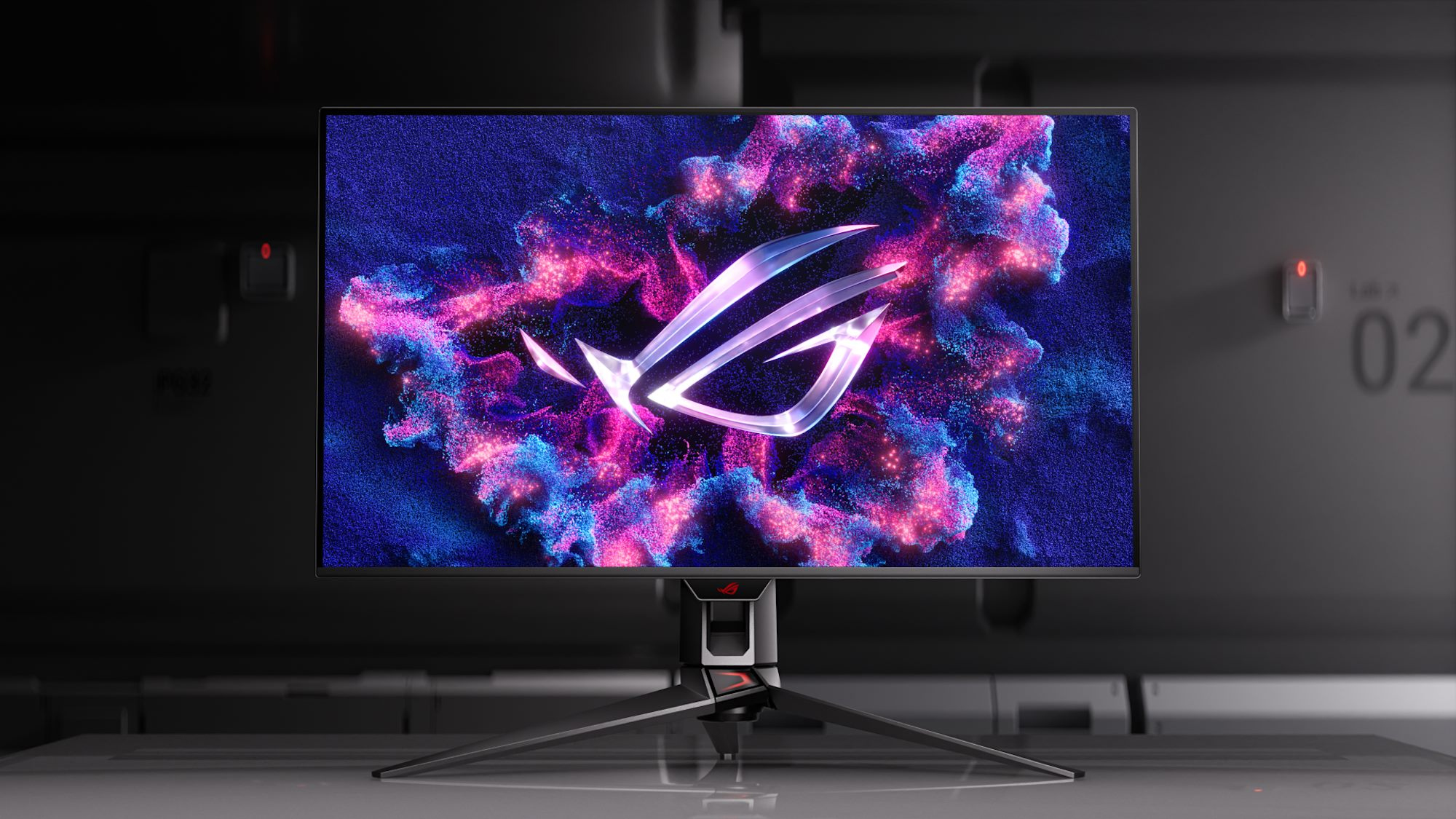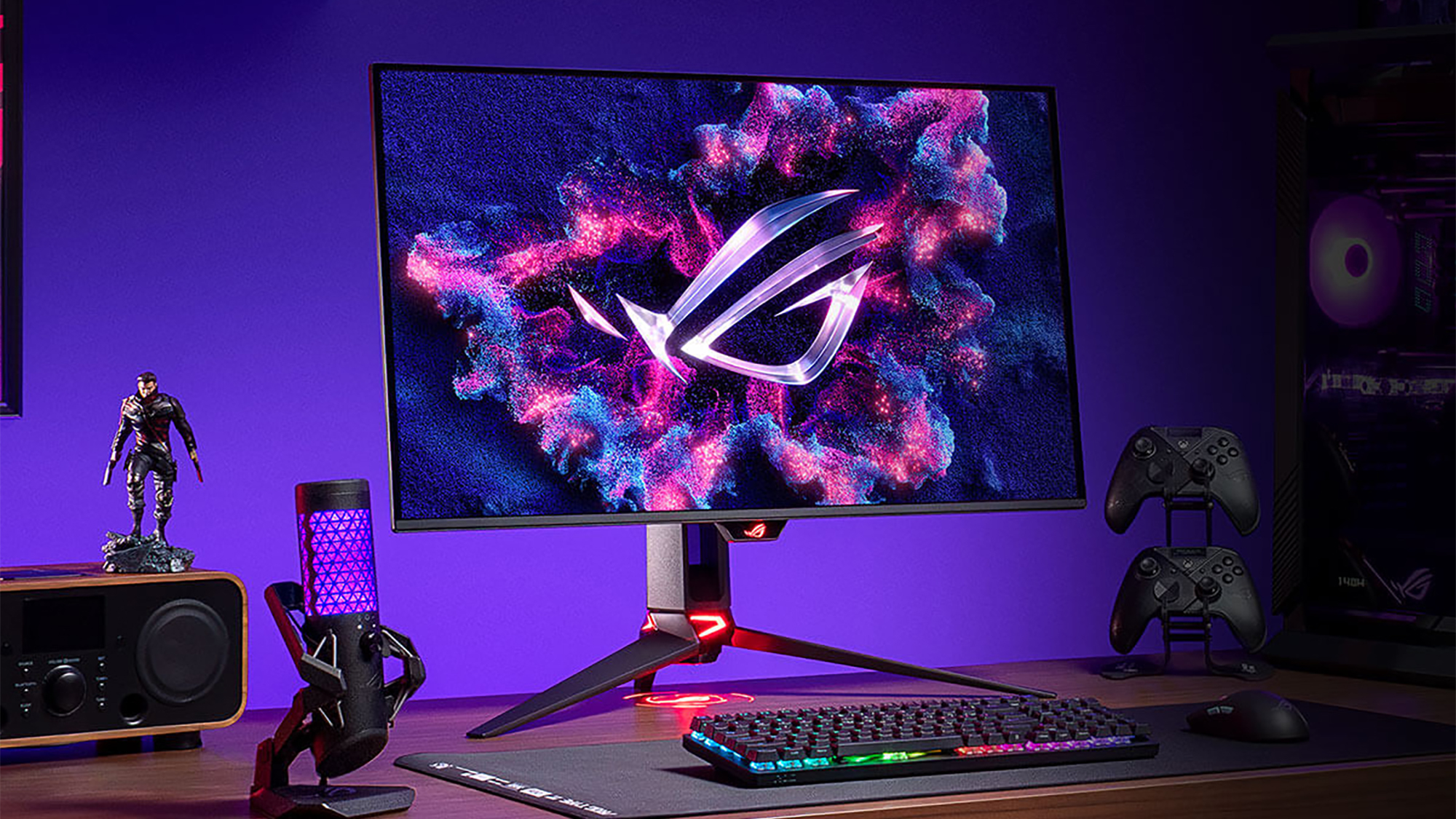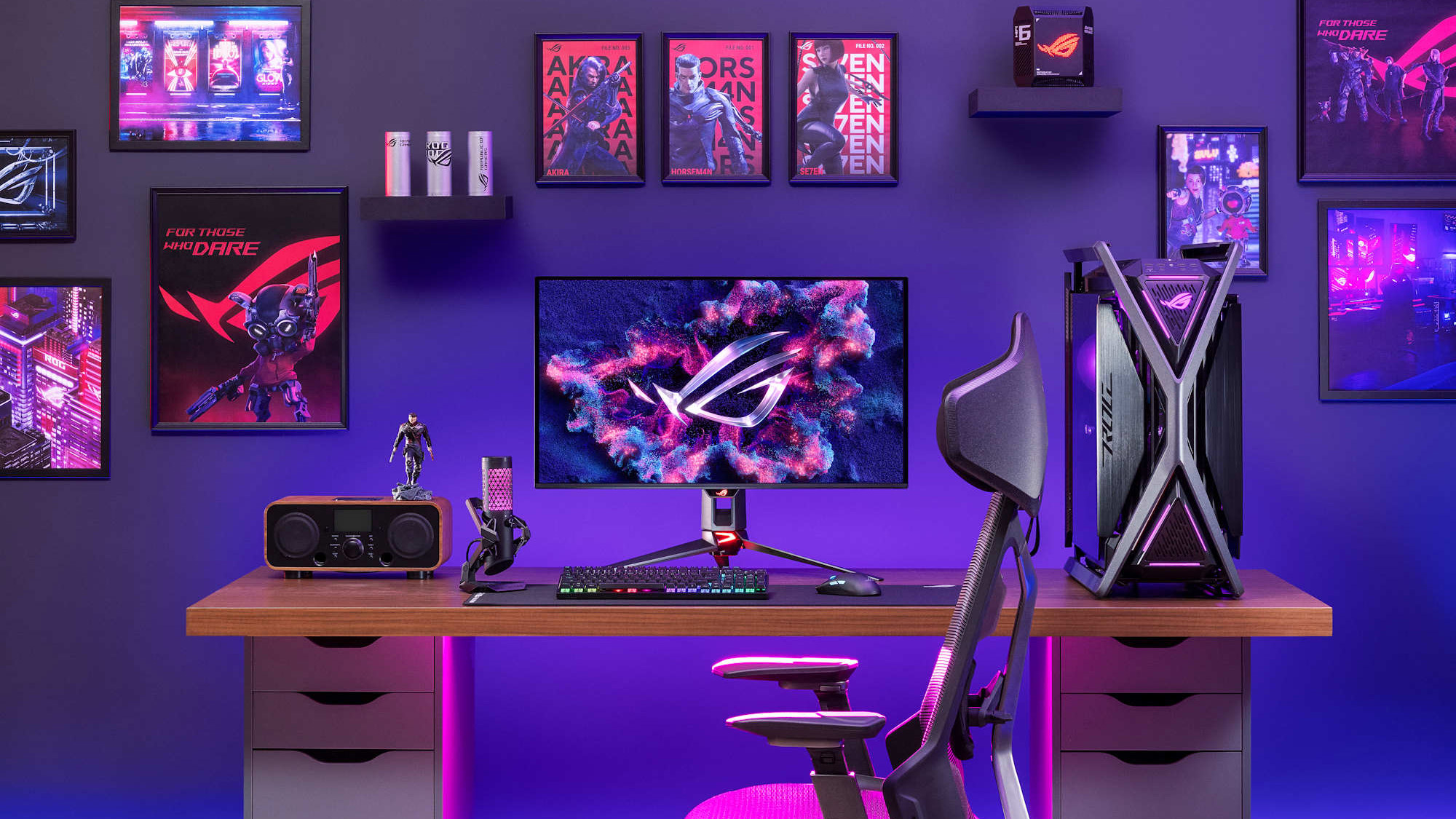Asus ROG Swift OLED PG32UCDM review: a gorgeous gaming experience
Another stand-out monitor from Asus



With the price tag attached to the Asus ROG Swift OLED PG32UCDM, it's only going to appeal to the most serious gamers – but if it does fall within your budget, you get one of the best 4K OLED gaming monitors around, which really helps to make your games shine.
-
+
Superb quality OLED picture
-
+
Handles colour balance very well
-
+
Versatile selection of ports
-
-
You'll have to pay a lot for this
-
-
No integrated speakers
-
-
Customisations could be easier
Why you can trust T3

Asus and its ROG (Republic of Gamers) series certainly has previous form when it comes to the best gaming monitors you can buy – and the Asus ROG Swift OLED PG32UCDM on review here is the latest model looking to make it into that particular list.
At this size and with OLED involved, we're talking about a display panel that's definitely up towards the more expensive end of the market, but it offers plenty in the way of specs and features to try and justify that price for serious gamers.
This isn't a curved or ultrawide monitor – so you'll need to see our best curved gaming monitor and best ultrawide monitor lists if those are your criteria for your next screen upgrade – but the Asus ROG Swift OLED PG32UCDM still has plenty of gaming appeal.
Asus ROG Swift OLED PG32UCDM: Price & availability
The Asus ROG Swift OLED PG32UCDM is now available to buy from several tech retailers, and can be picked up for around £1,350 / $1,300 at the time of writing.
If you're in the UK, you can get the monitor from retailers including Scan. The widgets embedded on this page will tell you whether or not you can get a better price online right now.
Asus ROG Swift OLED PG32UCDM review: design & setup

The Asus ROG Swift OLED PG32UCDM is packed up in quite a large box, but you should be able to fit it together yourself without needing any tools – it's the usual thumbscrew to fix the base to the stand, and slide-and-snap method for getting the stand attached to the actual monitor. It only takes a few minutes, and once that's taken care of you've got a monitor measuring 718 x 579 x 274mm.
As far as the design goes, we're impressed on the whole: it manages to be sleek and stylish, without being overly fancy or screaming "gaming" too loudly. You can customise the lighting around the base (which defaults to a rather distracting red) and on the back, but you need to download software and connect your computer via USB. We'd rather this was something you could change using the on-screen display (OSD).
Get all the latest news, reviews, deals and buying guides on gorgeous tech, home and active products from the T3 experts
Speaking of the OSD, it's one of the better ones out there, with a variety of useful features and settings within easy reach – and extra credits to Asus for including enough buttons to make navigation straightforward. You've got eight different visual presets to choose from, and there's a custom one too if you want to save your own settings (though many people will probably stick with the out-of-the-box options).
When it comes to ports, you've got 1x DisplayPort 1.4, 2x HDMI 2.1, and 1x USB-C (with DP Alt Mode). There are another 3x USB-A ports you can use as a hub or a switch for sharing peripherals between computers.
You get some handy height and tilt adjustment, but you can't swivel or rotate the screen. Therefore those downward-facing ports are a bit of a pain to plug cables into, but that's by no means something unique to this monitor or to Asus.
Asus ROG Swift OLED PG32UCDM review: features & picture

Testing out the Asus ROG Swift OLED PG32UCDM with some of our favourite games – involving the cities of San Andreas, Night City, and Saint Denis, to give you a clue – we found the monitor excels in just about every area, from the balance of the colours to the fluidity of the motion. Sometimes we found ourselves just sitting back in appreciation of what was on the screen.
Thanks to the OLED panel on show here, pictures look vivid and rich, and contrasting colours and brightness ranges are handled very well indeed. Think the blinking lights of the Del Perro Pier at night in GTA V, for example. Brightness is good without being best in class, but then that's a limit that still applies to OLED technology across the board, and it definitely makes up in other ways.
The specs here are a 31.5-inch size, a 4K (3840 x 2160 pixel) resolution, a 0.03 millisecond response time, and a maximum 240Hz refresh rate. It's certified for Nvidia G-Sync and AMD FreeSync Premium Pro variable refresh rates, provides both HDR10 and Dolby Vision HDR support, and reaches up to 1000 nits of peak brightness. Asus' Extreme Low Motion Blur (ELMB) tech is included too.
And all these specs add up to a really high-performance screen when you're actually using it. Input lag is non-existent, HDR is excellently implemented, and details are clear and crisp. When gaming time is over and you're watching movies, browsing the web, or actually having to do some work, again everything looks gorgeous – even spreadsheets. But it's gaming where the screen really peaks.
There are no integrated speakers here, which is always a disappointment – even basic, budget speakers are better than nothing – because you're set up straight away for sound and can then improve on it if you need. Here, you're not going to hear anything unless you've got separate speakers or headphones connected, or you make use of the 3.5 mm audio jack on the monitor itself.
Asus ROG Swift OLED PG32UCDM: verdict

Dropping this amount of money on a gaming monitor is clearly not something for everyone – as you could buy yourself a capable gaming PC for less. The Asus ROG Swift OLED PG32UCDM is therefore strictly for those who want the best screen technology for their gaming sessions. For that specific group, however, this is a monitor that doesn't disappoint.
The Swift OLED PG32UCDM certainly puts big, bold ticks in most of the boxes you need. Just about every game is going to look stunning on this screen, with the caveat that you're going to need a pretty highly-specced PC attached to make the most of the visuals – especially at 240Hz.
The design of the monitor is very 'ROG' style, and there's no arguing that it's well put together, boasting some relatively thin bezels around its edges. We're impressed with the selection of ports too, and the ability to use it as a KVM switch (keyboard, video, mouse) is an added bonus.
While OLED continues to have some inherent limitations when compared to other panel technologies, such as Mini LED, the pros far outweigh the cons here. Ultimately the Swift OLED PG32UCDM will transform your gaming experiences straight out of the box.
Also consider
If you really want to go big on your OLED gaming monitor, consider the fantastic Samsung Odyssey OLED G93SC: it's curved and ultra-wide, stretching 49-inches from corner to corner. It'll cost you even more than the Asus monitor we've reviewed here, but it performs brilliantly in a lot of the key areas that matter, and will make your gaming experience more immersive than ever before.
There's also the curved Acer Predator X45 to think about putting on your shortlist. At 44.5-inches, it's not quite as huge as the Samsung monitor, but it still offers you all the benefits of OLED (and has a price to match). Unlike the PG32UCDM, there are integrated speakers, and in our time with the monitor we were particularly impressed by the colour, contrast, and motion handling.
Dave has over 20 years' experience in the tech journalism industry, covering hardware and software across mobile, computing, smart home, home entertainment, wearables, gaming and the web – you can find his writing online, in print, and even in the occasional scientific paper, across major tech titles like T3, TechRadar, Gizmodo and Wired. Outside of work, he enjoys long walks in the countryside, skiing down mountains, watching football matches (as long as his team is winning) and keeping up with the latest movies.
